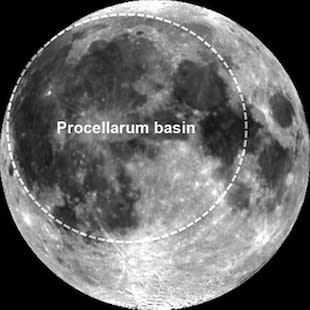 The Sideshow
The Sideshow‘Man in Moon’ created by asteroid impact the size of Austria

The famous flattened image across the surface of the moon, long dubbed the "Man in the Moon," appears to have been created by a giant asteroid the size of Austria.
A new study published in the British journal Nature Geoscience says the flattened, 1,800-mile-wide section of the moon's Procellarum basin was caused after the large asteroid crashed into the moon's surface.
"The nearside and farside of the Moon are compositionally distinct," reads the introduction to the study. "The detection of low-calcium pyroxene around large impact basins suggests that the huge Procellarum basin on the nearside may be an ancient impact structure and a relic scar of the violent collision that produced the lunar dichotomy."
Scientists at the National Institute of Advanced Industrial Science and Technology studied the distribution of minerals on the moon's surface using data collected by Japanese moon exploration orbiters, the Asahi Shimbun reported.
The size of the asteroid is estimated to have been 180 miles in diameter, hitting the moon's surface 3.9 billion years ago.
"The latest study explains why the moon's two sides are so different," said Junichi Watanabe, a professor of astronomy at the National Astronomical Observatory of Japan. "It helps unravel the mystery of the moon's history."

